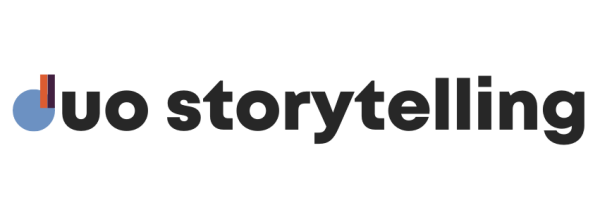For readers, a book blurb can make the difference between a purchase and deciding to pass on a book. Yet many self-published and indie authors have difficulty striking the right combination of intriguing and informative. We dive into the dos and don’ts of drafting the perfect, eye-catching blurb for your book.
What Is a Book Blurb?
Some think of a book blurb as a short summary of their book, but a well-crafted blurb does more than convey the basic setup.
A solid book blurb captivates a person’s imagination, grips them from the first sentence, and leaves them hungry for more. If that sounds like a tall order, that’s because it is. The blurb on your book is a critical piece of marketing for a self-published author, so it’s worth getting it right.
With that in mind, let’s break it down.
Book Blurb Anatomy: What’s Inside?
Despite looking like one piece of text, a book blurb can be broken down into three individual and equally important elements.
A Killer Hook
This is the first line of your blurb and should be geared toward grabbing your reader’s attention.
You can think of this as the tagline or logline of your book. When thinking about your hook, consider unique elements of your story, main characters, or setting that would draw a reader’s attention.
Check out this hook from Sarah J. Maas’s breakout success, A Court of Thorns and Roses:
When nineteen-year-old huntress Feyre kills a wolf in the woods, a terrifying creature arrives to demand retribution.
Not only does this hook give you key information on the main character such as age and name, it hits you with a story element that distinguishes it from other books on your shelf. A teenage girl killing a wolf in the woods? A terrifying creature showing up to settle the score? If this book is your preferred genre, you’re probably already itching to peel back the cover to see what’s up. That’s the power of a hook!
An Intriguing Summary
The summary is where many self-published authors find themselves lost in the weeds. That’s because it requires a delicate balance between giving out information and holding back enough to keep them curious.
Sometimes it’s hard to know what to include and what to leave out, leading to bloated summaries that kill interest rather than kindle it.
In general, you should think of your blurb as an extended hook. Focus on what makes your story unique, even if it has common themes or tropes.
Let’s look back at A Court of Thorns and Roses for the rest of the blurb:
Dragged to a treacherous magical land she knows about only from legends, Feyre discovers that her captor is not truly a beast, but one of the lethal, immortal faeries who once ruled her world.
At least, he’s not a beast all the time.
As she adapts to her new home, her feelings for the faerie, Tamlin, transform from icy hostility into a fiery passion that burns through every lie she’s been told about the beautiful, dangerous world of the Fae. But something is not right in the faerie lands. An ancient, wicked shadow is growing, and Feyre must find a way to stop it, or doom Tamlin—and his world—forever.
Here you can see Maas highlight interesting story elements without telling the story itself. There is no conclusion, no spoilers, just good old-fashioned teasers.
We dig deeper into what makes a good summary in the next section.
Genre Identifying Context
A reader should always get a good idea of your genre based on your cover and title, but your summary should leave no room for confusion. That doesn’t mean you should put your genre and subgenre in big, bold lettering. Instead, ensure that your genre shines through your hook and summary.
This may mean highlighting genre-specific elements or tropes in your book blurb, or simply making your genre elements clear in your description.
If you look back at the blurb for A Court of Thorns and Roses, you can clearly see the elements of fantasy and romance at play. Maas mentions the Fae, beasts, terrifying creatures, and other realms. In addition, the reader gets the cheeky note that Feyre’s captor isn’t a beast all the time. This subtlely hints that there may be something more between them in the story.
Stick the Landing on Your Summary: the Five Ws
As we mentioned above, the summary portion of a book blurb can be one of the most confusing parts. You want your readers to understand what they’re getting into, but you also don’t want to give everything away or write a blurb so long that no one finishes it. Similar to most writing, an effective summary requires you to balance between what you choose to share and what you keep secret.
As with any great full-length story, a book summary should include aspects of all five Ws: who, what, when, where, and why. The when and where are often less important than the other three, but all five should be considered.
Who (Is Your Story About)
It may seem basic, but your reader should get at least a general sense of your main characters. Notice how the first line of the blurb for A Court of Thorns and Roses immediately gives the name, age, and general occupation of the main character. This approach allows your reader to immediately connect with your characters.
In short, people care about people, and for some readers, an interesting cast of characters makes or breaks a purchase.
What (Is Going On)
Your description should also include some elements of the plot, specifically major but nonrevealing elements. This will help your readers identify whether the plot is for them without giving away how it ends.
For example, you might tease the stakes your character is up against, such as an impending conflict, or a potential outcome if action isn’t taken.
This can also be about your character’s internal journey rather than the external plot.
Why (Do These Characters Care)
You can have the coolest plot idea in the world, and it can still fall flat if your characters do not have a clear motivation to pull them through. That motivation should shine through in your blurb.
Another way of thinking about this is that by sharing your character’s why, you are also showing the reader why they should read it. In other words: let your readers know what’s at stake!
When (Is This Taking Place)
Though less important unless you’re writing a historical work or shooting your readers into the far-flung future, the when of your book can still matter.
Think of the when not necessarily as the time the story takes place, but the point in time it takes place in your world. What came before that moment, and what might come after? You can see this dynamic clearly in the blurb for A Court of Thorns and Roses. The reader is made aware that the story is taking place after the Fae no longer rule Tamlin and during a time of great tension.
Where (Is This Happening)
Similar to when, the where of your story may not be important unless the setting is critical to understanding the plot, such as in fantasy or sci-fi novels set outside of our known Earth.
But where can also indicate what affects the main characters or the plot. For instance, if a cornerstone of your story is travel across long distances, the where is integral to showing that to a reader.
In the case of A Court of Thorns and Roses, the reader comes away from the blurb knowing that the story takes place between multiple worlds that are separated from each other, which is central to the story.
Bring Your Book Blurb Together
Once you have your hook, a summary that answers all the important questions, and a clearly identified genre, you’re ready to go! But as important as it is that you feel satisfied, it’s also important that your future readers do as well.
Get Feedback
Fresh eyes are invaluable to the creative process, especially when it comes to writing for an audience.
Don’t hesitate to show your blurb-in-progress to friends, fellow authors, or even beta and ARC readers. They’ll let you know if your blurb is landing the way you want.
If you’re feeling nervous about sharing with people in your life, you can find online communities like r/selfpublish on Reddit where you can seek quality insight anonymously.
Use Text-to-Speech Programs
Another thing to keep an eye out for is how naturally your blurb reads. When you’re trying to condense so much information into so few words your sentences can take on a life of their own. Use text-to-speech programs as an easy, free way to gauge the flow of your blurb prose.
Looking for More?
Brush up on your self-promotion skills and get your book seen by an even wider audience by checking out our promo guide for self-published authors.
Whether you’re trying to find the perfect narrative POV for your book or trying to build your best main character, we’ve got you covered.
Find us on Instagram and Facebook for more.
Sign up for our newsletter to receive TWO FREE toolkits: Demystifying Query Letters and The Roadmap to Successful Self-Publishing.


